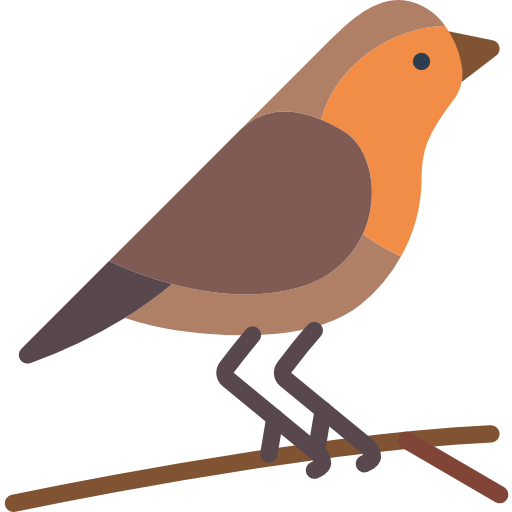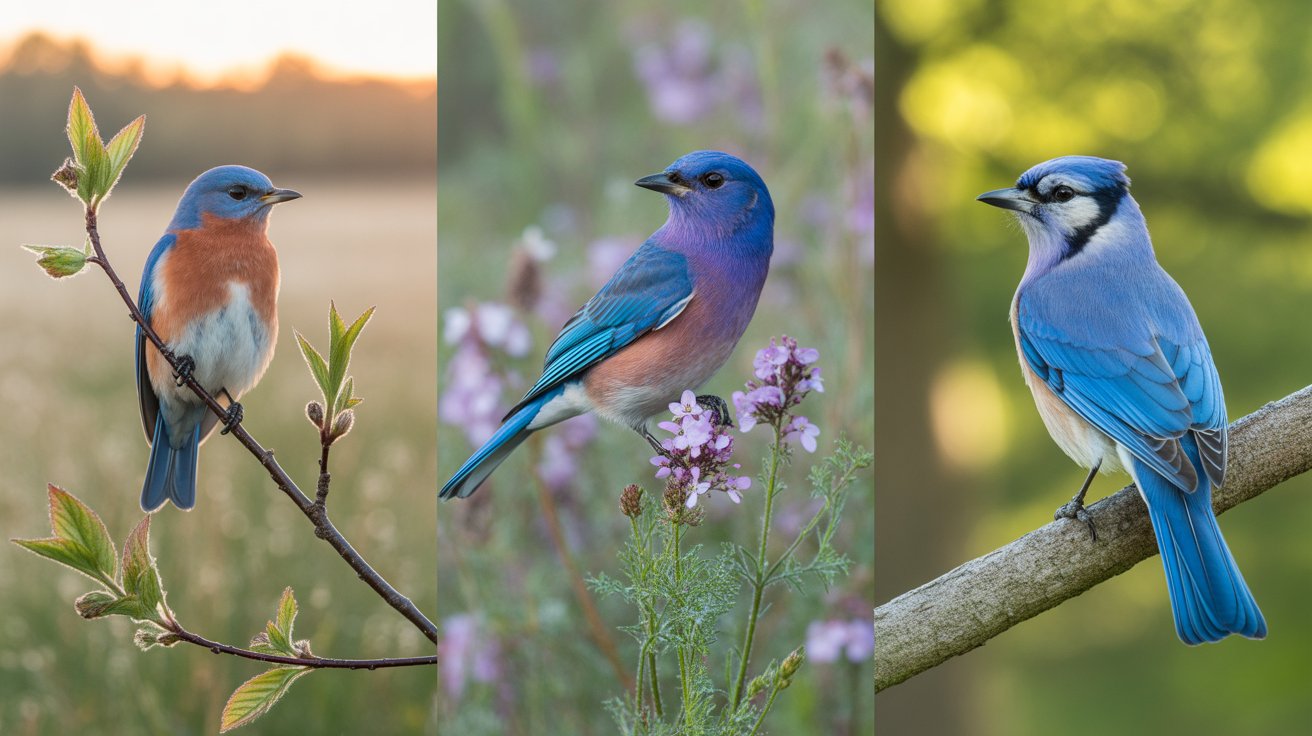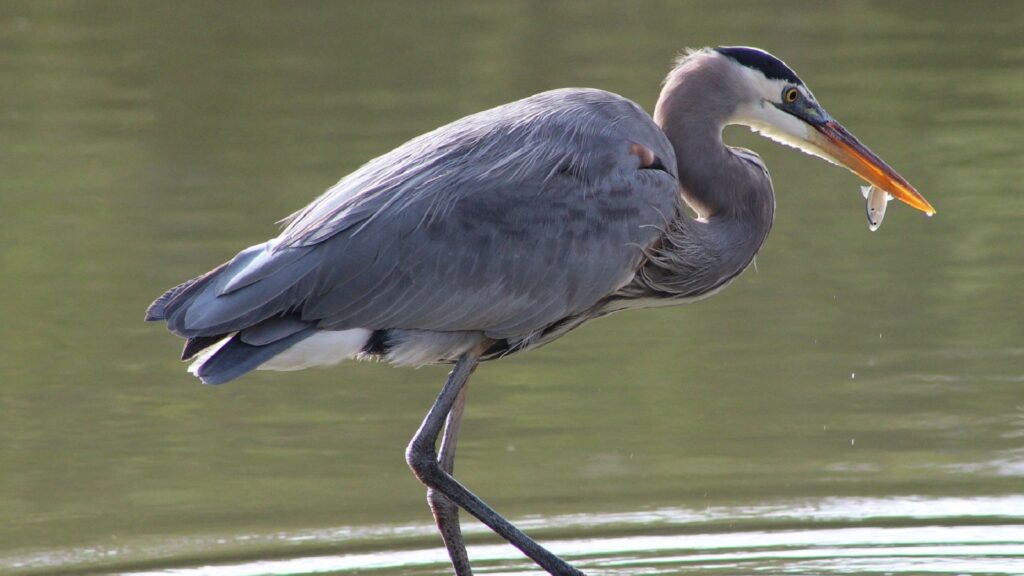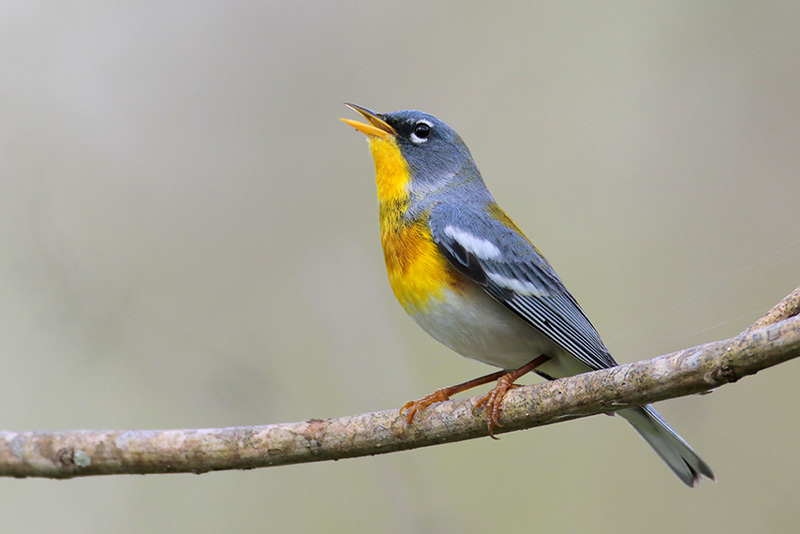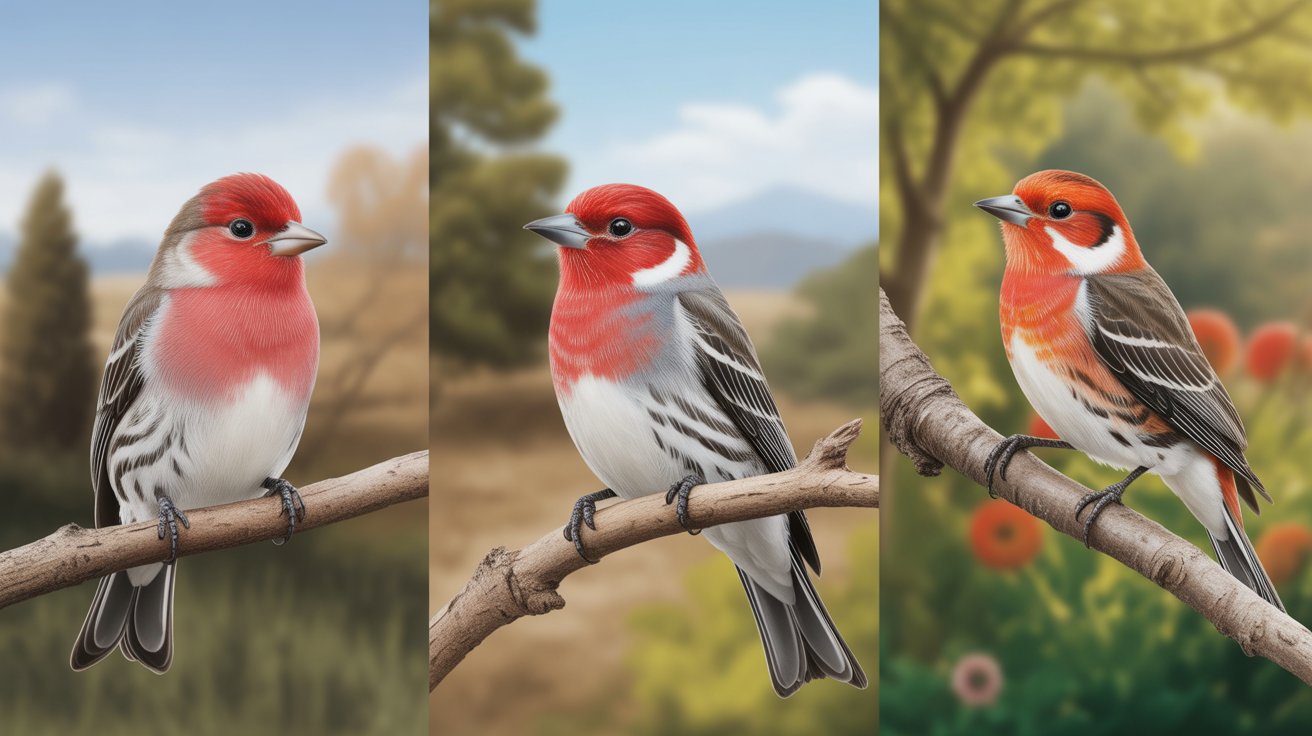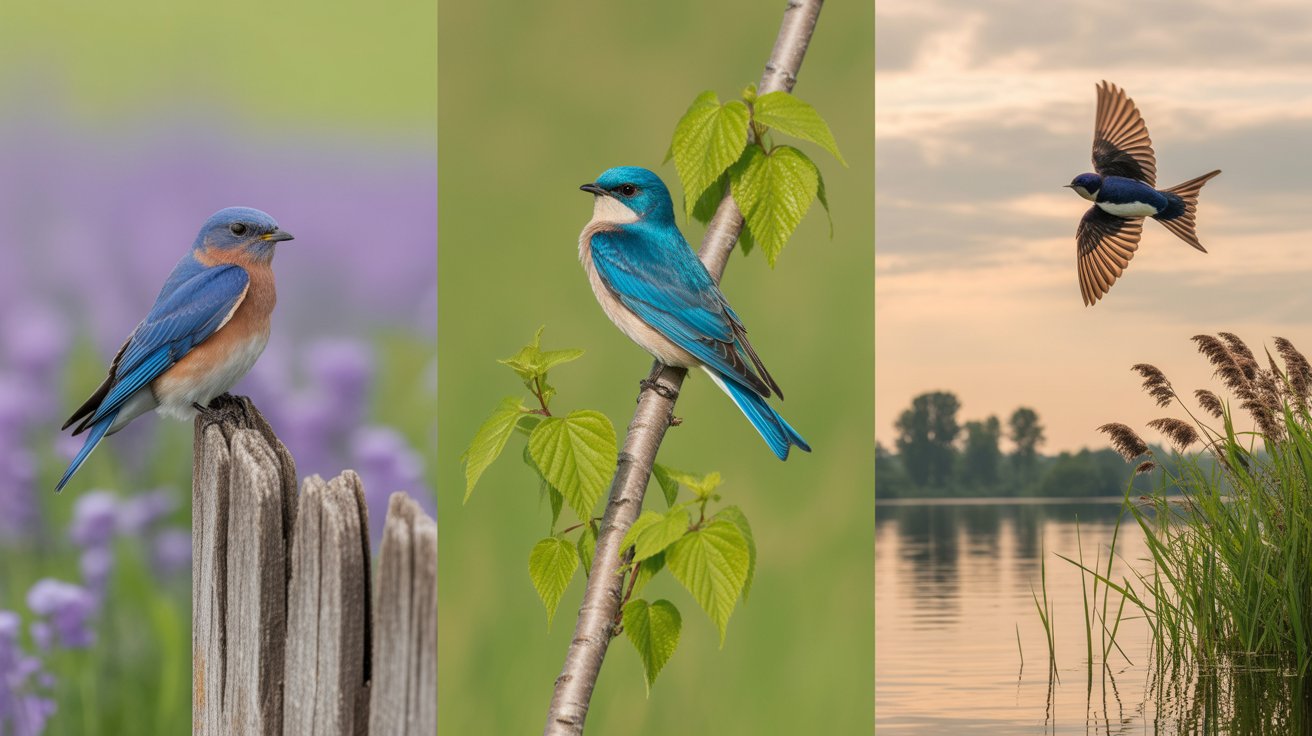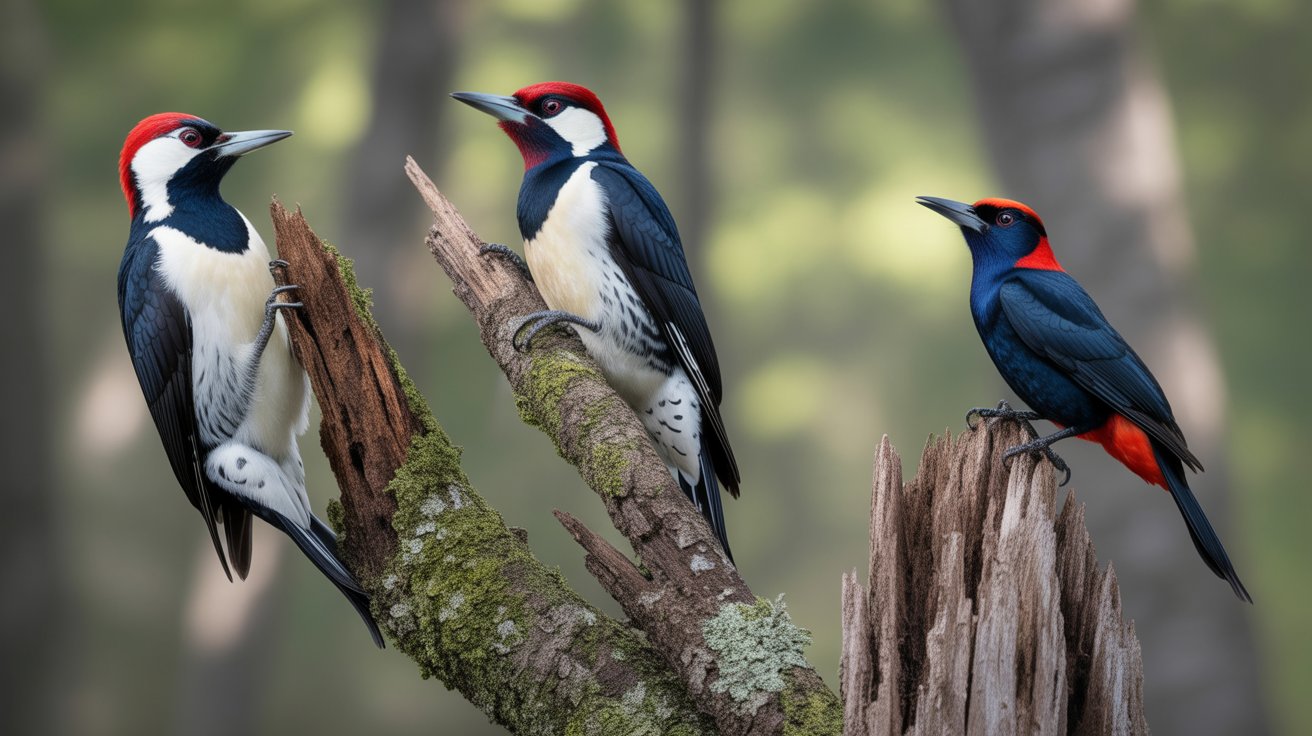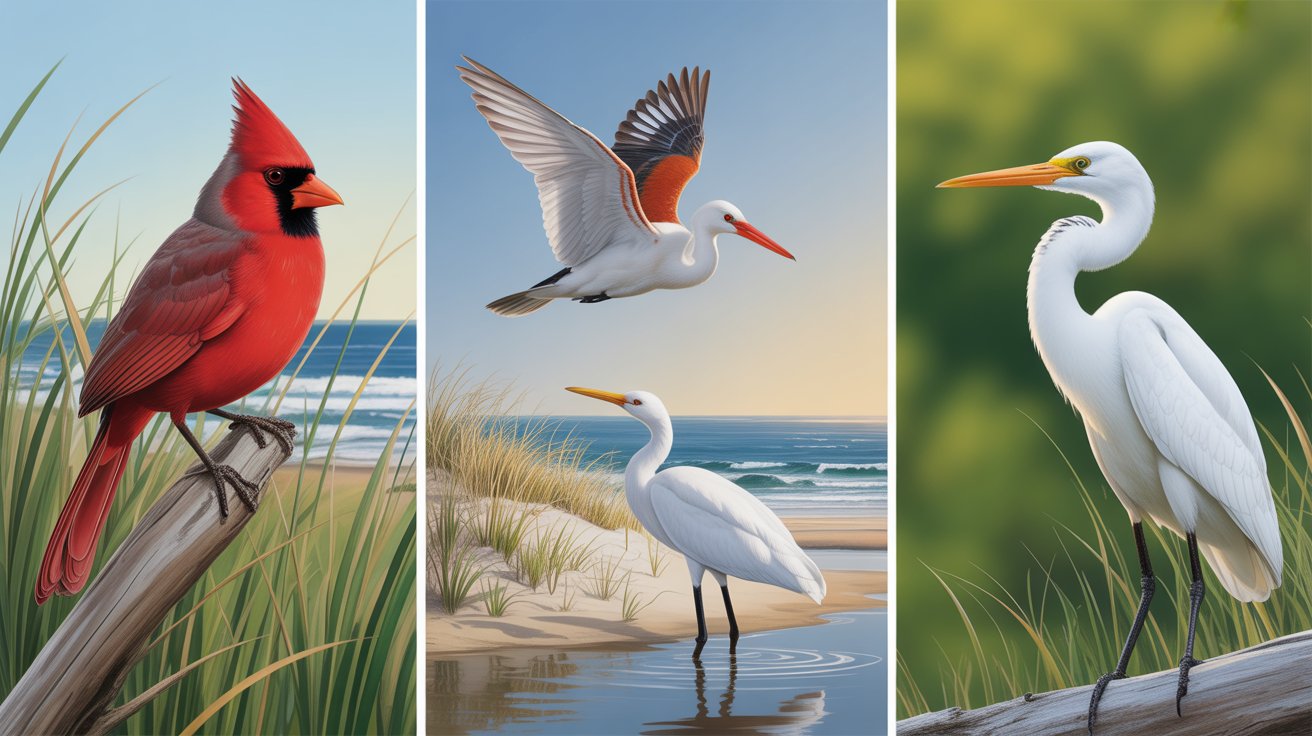You might already sense the charm of blue birds—those flashes of sky‑blue among branches and open fields. In Illinois, you’re in luck: this state hosts an impressive variety of blue‑toned species that brighten your backyard, woodland walks, and lakeside strolls. Whether you’re an avid birder, a curious nature enthusiast, or simply someone who values vibrant wildlife, you’ll find yourself enchanted by the diversity of blues here.
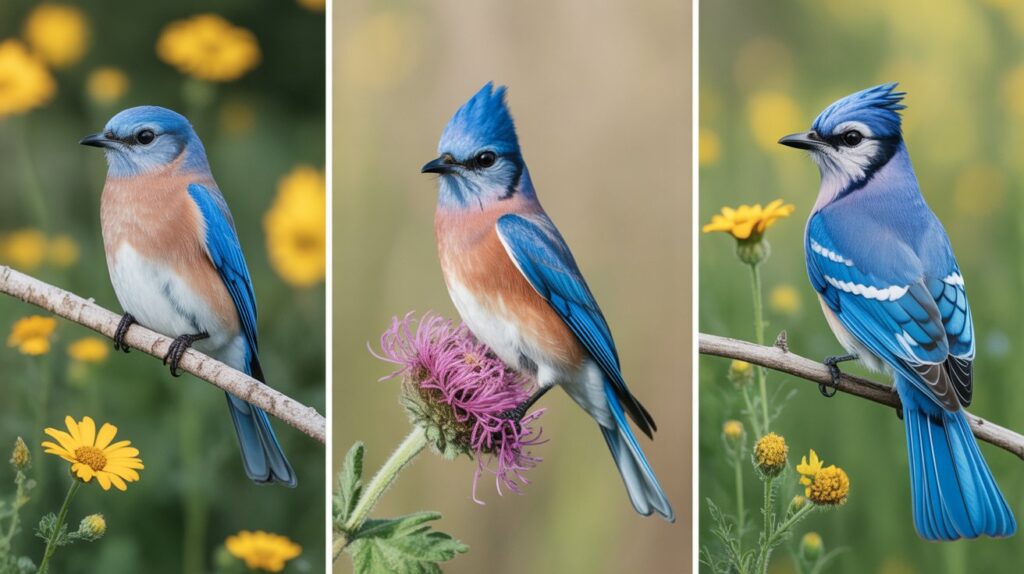
In this guide, you’ll discover more than fifteen feathered wonders—ranging from the beloved Eastern Bluebird to the elegant Great Blue Heron. Each species is unique in habitat, behavior, and appearance. You’ll learn where to spot them, what sets them apart, and how to help them thrive in your own outdoor space.
I kept the details clear and scannable so you can quickly glance through wingspans, distinctive calls, and appearance. I’ve also sprinkled in helpful tips—like how to identify an Indigo Bunting by its brilliant summer plumage or where to find the shy Black‑throated Blue Warbler in fall migration.
By the time you finish reading, you’ll not only know these 15+ blue birds by name but also feel confident in recognizing them in the field. Let’s dive in and add some color to your Illinois birding journey!
Contents
- 15+ Blue Birds in Illinois
- Eastern Bluebird
- Indigo Bunting
- Blue Jay
- Blue Grosbeak
- Tree Swallow
- Black-throated Blue Warbler
- Cerulean Warbler
- American Robin
- Gray Catbird
- Purple Martin
- Red-breasted Nuthatch
- Blue-gray Gnatcatcher
- White-breasted Nuthatch
- Great Blue Heron
- Northern Parula
- Common Grackle
- Little Blue Heron
- Common Starling
- Cliff Swallow
- Snowy Egret
- Red-winged Blackbird (Bonus Blue‑Hue Insight)
- FAQs
- Conclusion
15+ Blue Birds in Illinois
Eastern Bluebird
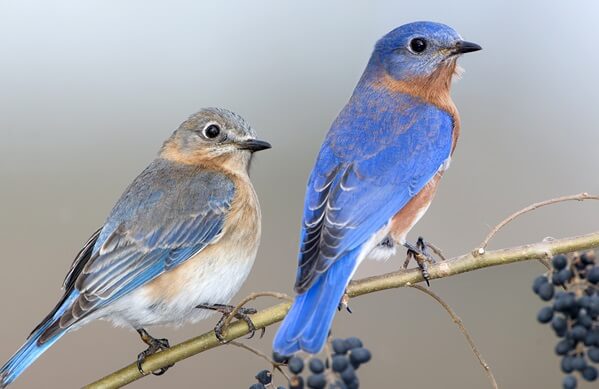
The Eastern Bluebird is often the first “blue” that comes to mind—and for good reason. Its vibrant cobalt‑blue back and rusty chest contrast beautifully against open fields and woodland edges. You’ll spot them perched atop fence posts or foraging for insects on lawns.
- Scientific Name: Sialia sialis
- Wingspan: 25–32 cm (9.8–12.6 in)
- Length: 16–21 cm (6.3–8.3 in)
- Weight: 27–34 g (1–1.2 oz)
These monarchs of meadows are cavity nesters—meaning they thrive with nest boxes. If you’re aiming to attract them, provide wooden boxes mounted 4–6 feet high in open grounds. In spring, you may hear their soft “chir‑lee” calls as they defend territories and feed fledglings.
Indigo Bunting
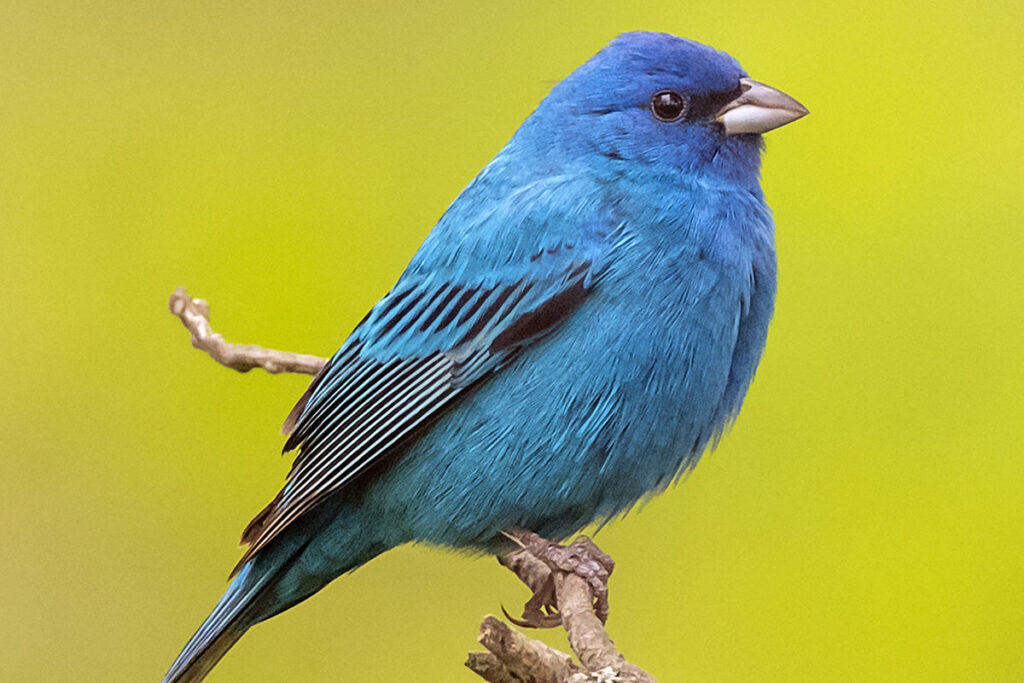
In the height of summer, the male Indigo Bunting transforms into a walking jewel box. He’s entirely electric blue under sunlight, while the female is modest brown. This species prefers brushy edges and thickets—great spots for late spring and summer sightings.
- Scientific Name: Passerina cyanea
- Wingspan: 23–25 cm (9–9.8 in)
- Length: 11–13 cm (4.3–5.1 in)
- Weight: ~12–14 g (0.4–0.5 oz)
Listen for their high‐pitched “sweet‐sweet‐tee” song amid morning bird calls. They’ll flock to feeders offering thistle or nyjer seeds, especially in migration, making your effort to plant native plants or hang feeders pay off.
Blue Jay
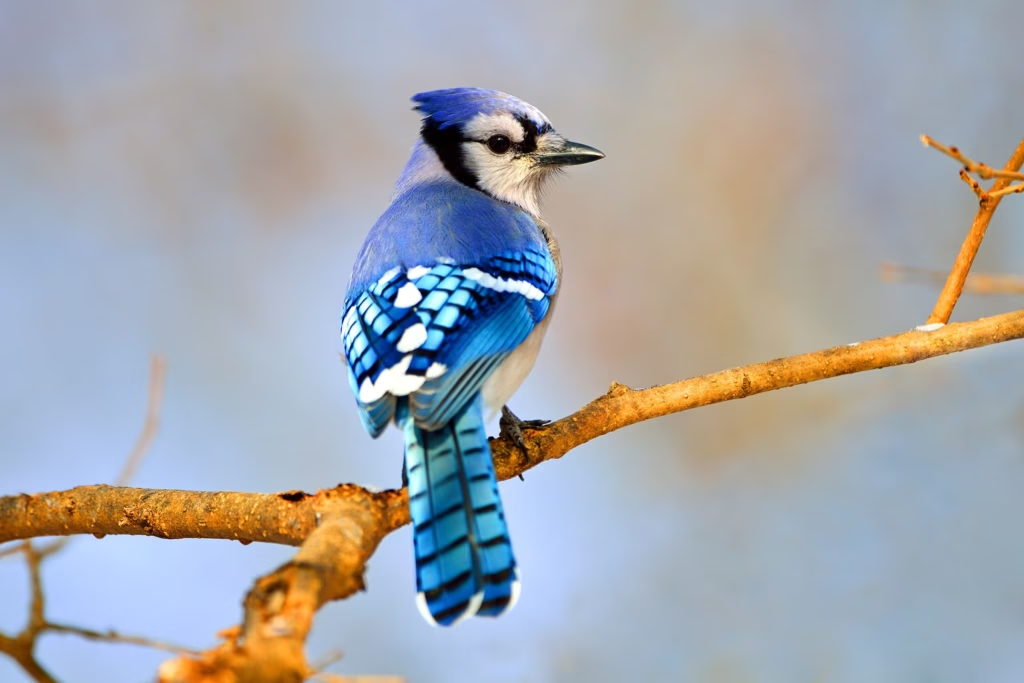
The Blue Jay is bold, clever, and unmistakable. With crest, white throat, and bright blue wings streaked with black and white, they’re a staple in wooded suburbs and parks.
- Scientific Name: Cyanocitta cristata
- Wingspan: 34–43 cm (13–17 in)
- Length: 25–30 cm (10–12 in)
- Weight: 70–100 g (2.5–3.5 oz)
These noisy, intelligent birds often mimic hawk calls. You’ll find them scavenging feeders for peanuts, seeds, or acorns. They’re protective of their territory—so if you spot one near your birdbath or feeder, take it as a sign of healthy habitat.
Blue Grosbeak
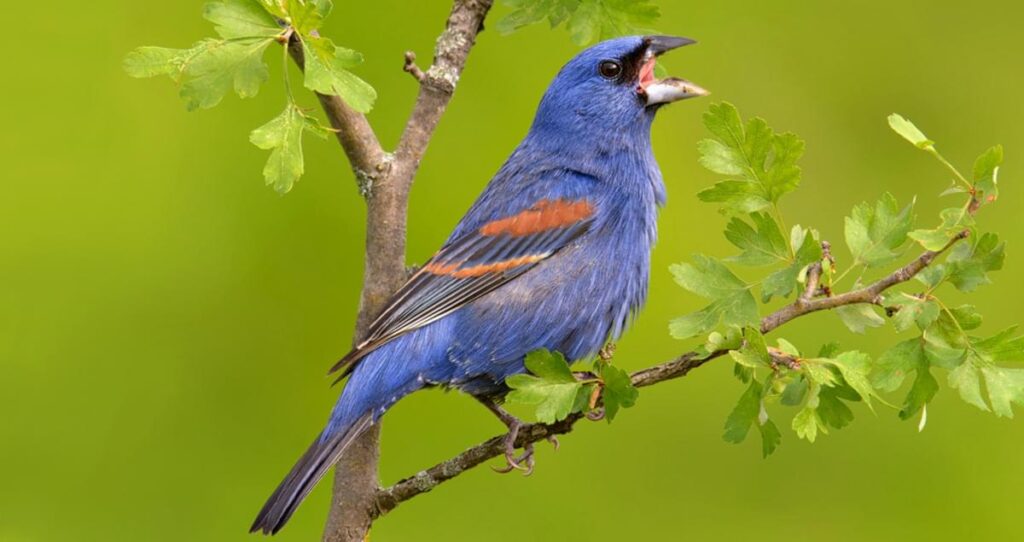
The Blue Grosbeak is a chunky songbird rarely glimpsed outside of southern Illinois. Males are dark cobalt‑blue with chestnut wing bars; females are light brown with faint bars.
- Scientific Name: Passerina caerulea
- Wingspan: 26–28 cm (10.2–11 in)
- Length: 14–18 cm (5.5–7.0 in)
- Weight: ~24–30 g (0.9–1.1 oz)
These birds favor brushy fields and hedgerows. You’ll hear males sing from low perches. If you want to see them, explore the southern counties in late spring to early summer—they’re shy, but truly rewarding.
Tree Swallow
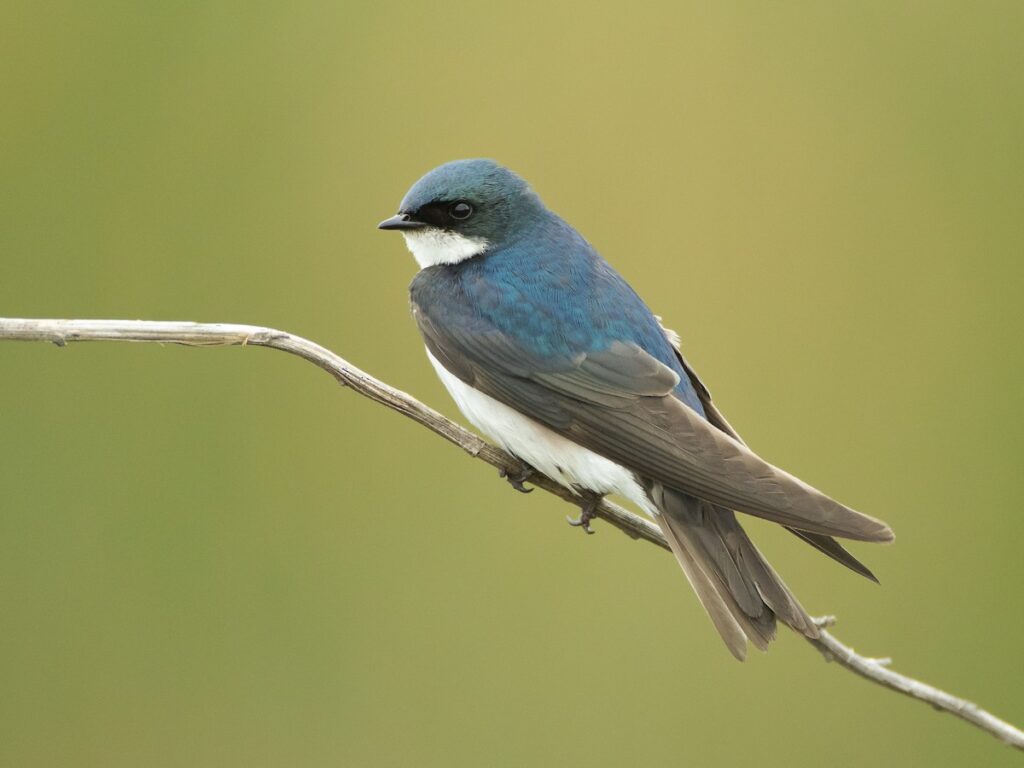
Gliding over ponds and fields, the Tree Swallow shines in glossy metallic blues above a snowy white belly.
- Scientific Name: Tachycineta bicolor
- Wingspan: 30–34 cm (11.8–13.4 in)
- Length: 12–14 cm (4.7–5.5 in)
- Weight: 17–23 g (0.6–0.8 oz)
Nest boxes along waterways and open fields attract them. Watching them aerobatically snatch insects midair is a delight. In migration, they gather in flocks at roosting spots—listen for their soft chattering calls during sunset.
Black-throated Blue Warbler
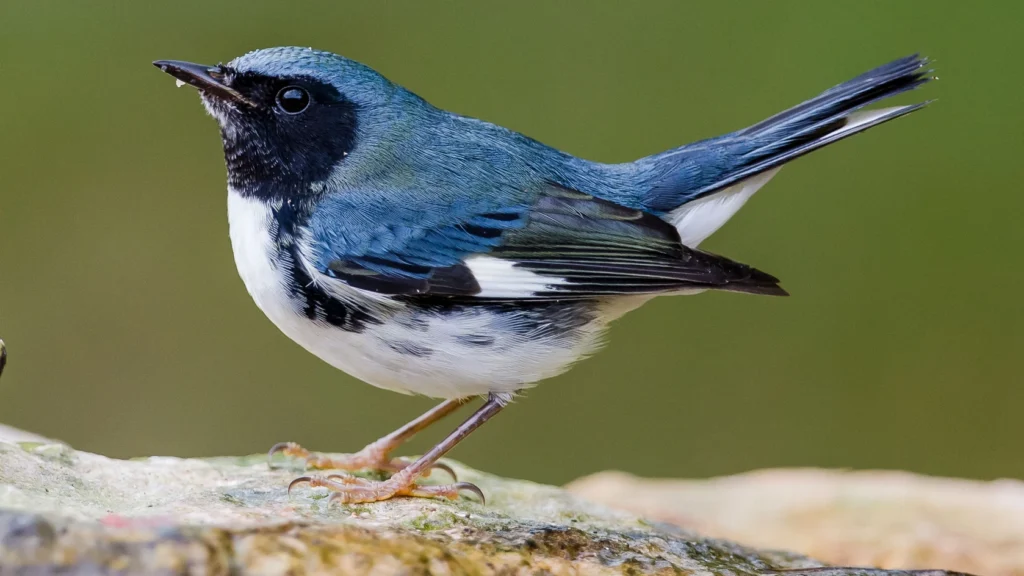
The Black-throated Blue Warbler is a migratory gem—you’ll most often see it in spring and fall, preferring dense forests and mature woodlands.
- Scientific Name: Setophaga caerulescens
- Wingspan: 18–22 cm (7–8.7 in)
- Length: 12–13 cm (4.7–5.1 in)
- Weight: ~7–13 g (0.25–0.46 oz)
Males are stunning: blue backs, white bellies, and jet‑black throat patches. Females are olive above with grayish underparts. Their sharp “chip” calls and active foraging among foliage are a birdwatcher’s dream—so keep eyes peeled in shaded trails during early morning hikes.
Cerulean Warbler
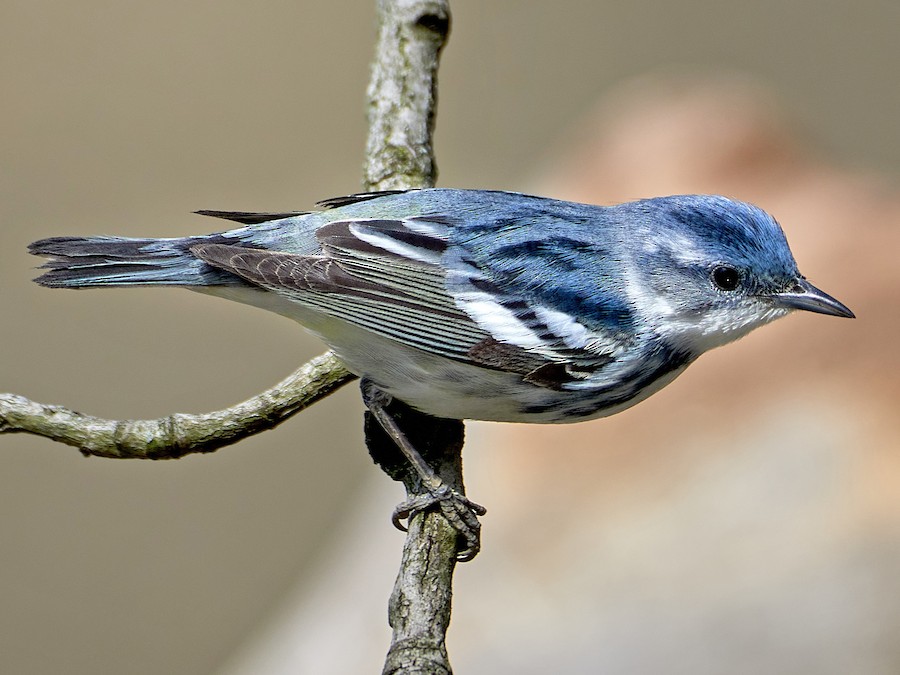
Another forest dweller, the Cerulean Warbler is small but vibrant—a sky‑blue gem in Illinois’ deciduous canopy.
- Scientific Name: Setophaga cerulea
- Wingspan: 20–23 cm (7.9–9.1 in)
- Length: 12–13 cm (4.7–5.1 in)
- Weight: ~8–11 g (0.28–0.39 oz)
Males have cerulean blue upperparts contrasting with white underparts and bold black streaks. Females are pale blue‑green above. They prefer riverine woodlands. With populations declining, spotting one becomes extra rewarding—for both conservationists and bird-lovers alike.
American Robin
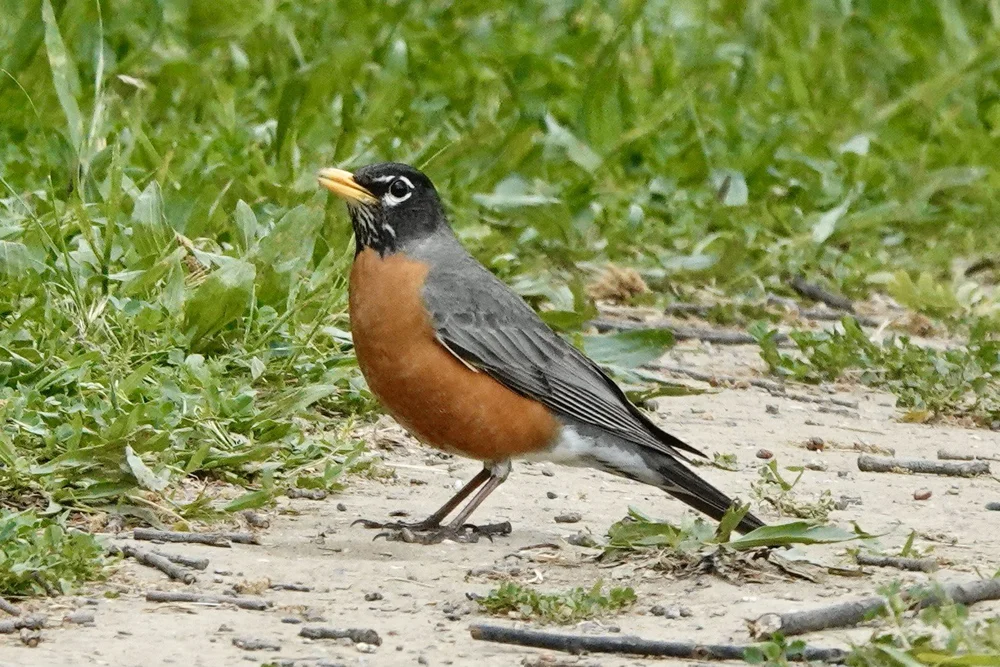
Though better known for its rusty red breast than blue, the American Robin has blue-gray upperparts worth noticing.
- Scientific Name: Turdus migratorius
- Wingspan: 31–41 cm (12–16 in)
- Length: 20–28 cm (8–11 in)
- Weight: 77–85 g (2.7–3.0 oz)
You’ll hear their cheerily paced song “cheerily… cheer up” at dawn. These robins forage for worms and berries, and may appear in large flocks during winter in parks and suburbs. Their adaptability makes them a beloved backyard staple.
Gray Catbird
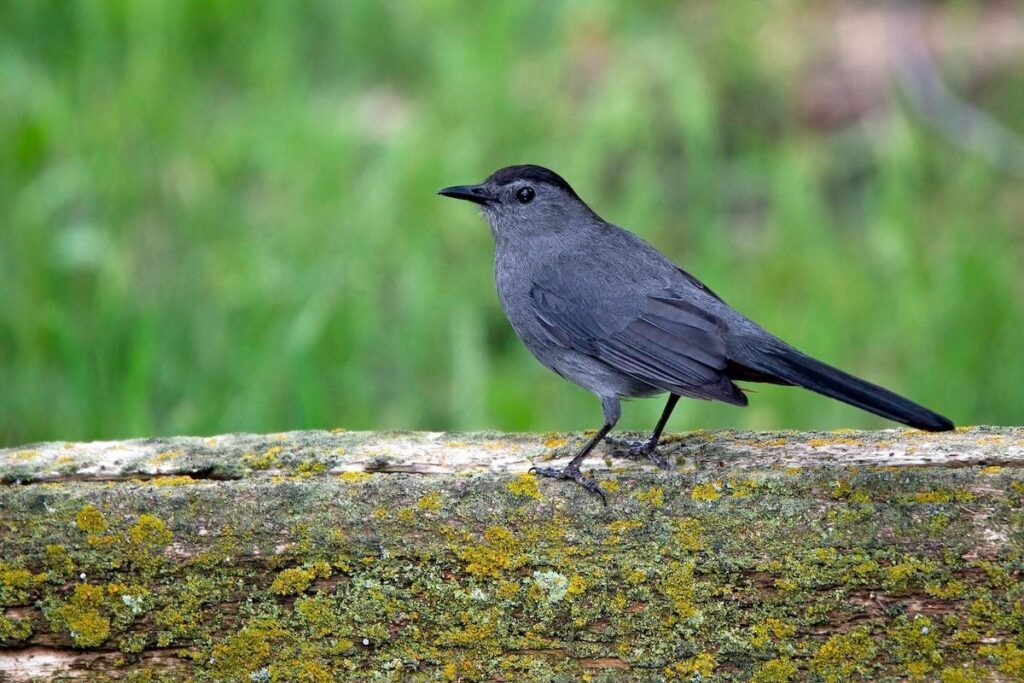
The Gray Catbird isn’t blue—except in its slate-gray tone that sometimes appears bluish in shade. It’s still a cousin in the songbird family and well worth including.
- Scientific Name: Dumetella carolinensis
- Wingspan: 25–30 cm (9.8–12 in)
- Length: 20–23 cm (8–9 in)
- Weight: 40–60 g (1.4–2.1 oz)
Known for its cat-like mew and impressive mimicry, this bird flits through thickets, often at eye level. Summer afternoons are prime time to hear their varied songs—sometimes incorporating other birds’ calls.
Purple Martin
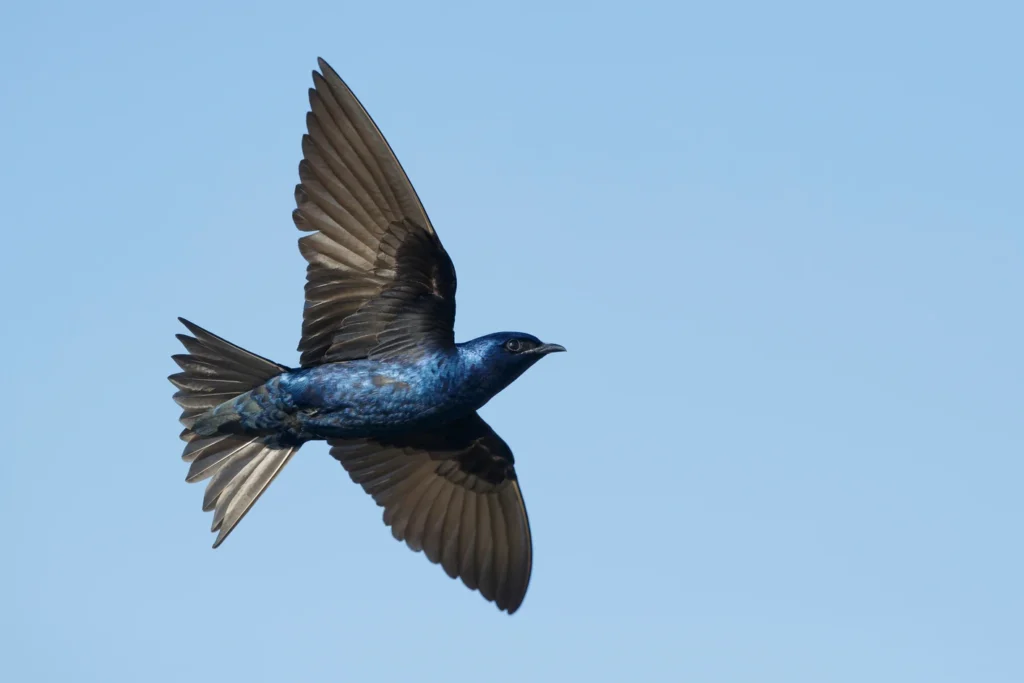
Purple Martins dazzle in glossy purple-black, though they look almost navy-blue in sunlight.
- Scientific Name: Progne subis
- Wingspan: 32–35 cm (12.6–13.8 in)
- Length: 19–21 cm (7.5–8.3 in)
- Weight: ~54–70 g (1.9–2.5 oz)
They rely entirely on man-made housing—multi-unit gourds and poles. In spring and summer, they coach each other’s feeding: swooping over fields for flying insects. Your backyard can be home to an entire colony—if sized and maintained properly.
Red-breasted Nuthatch
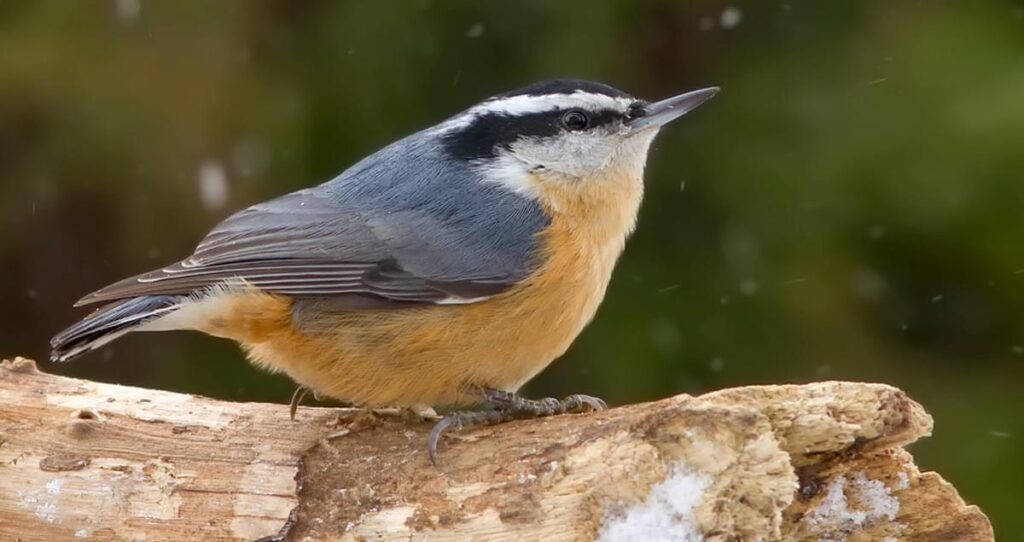
With its blue-gray body and cinnamon breast, the Red‑breasted Nuthatch is another small winter visitor with blue hues.
- Scientific Name: Sitta canadensis
- Wingspan: 19–24 cm (7.5–9.4 in)
- Length: 11–14 cm (4.3–5.5 in)
- Weight: ~9–13 g (0.3–0.46 oz)
Its distinctive high-pitched nasal call rings out as it climbs tree trunks headfirst, probing bark for insects. They’re acorn- and seed-eaters too—your suet feeders will be popular with them, especially in colder months.
Blue-gray Gnatcatcher
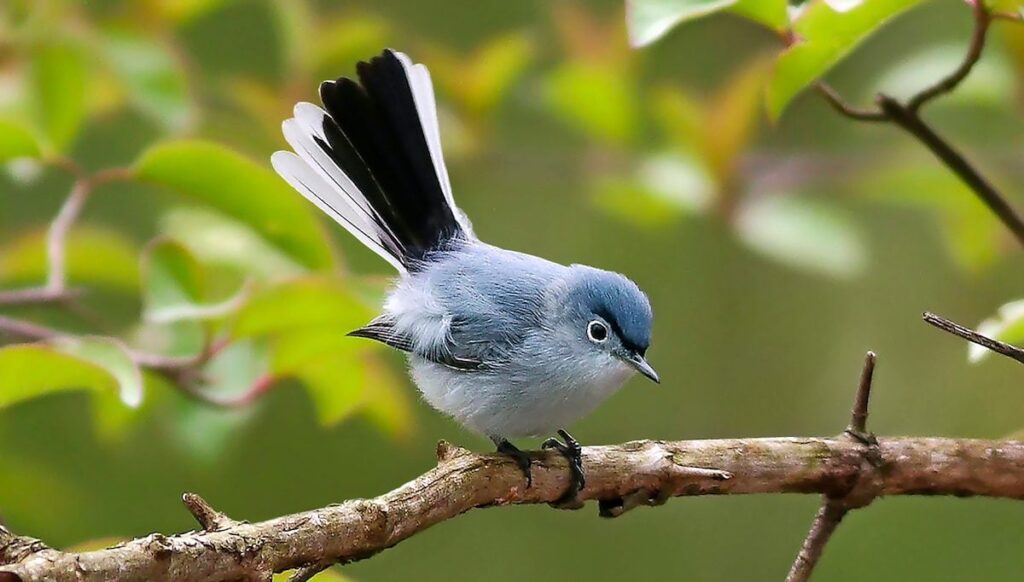
Tiny and lively, the Blue‑gray Gnatcatcher darts through tree foliage with a long tail always swinging to and fro.
- Scientific Name: Polioptila caerulea
- Wingspan: 17–18 cm (6.7–7.1 in)
- Length: 10–12 cm (3.9–4.7 in)
- Weight: ~5–7 g (0.18–0.25 oz)
Look for it in open woodlands hunting for tiny insects. Its thin, sweet “tsip” call often gives it away before you spot its soft gray‑blue plumage and white eye ring.
White-breasted Nuthatch
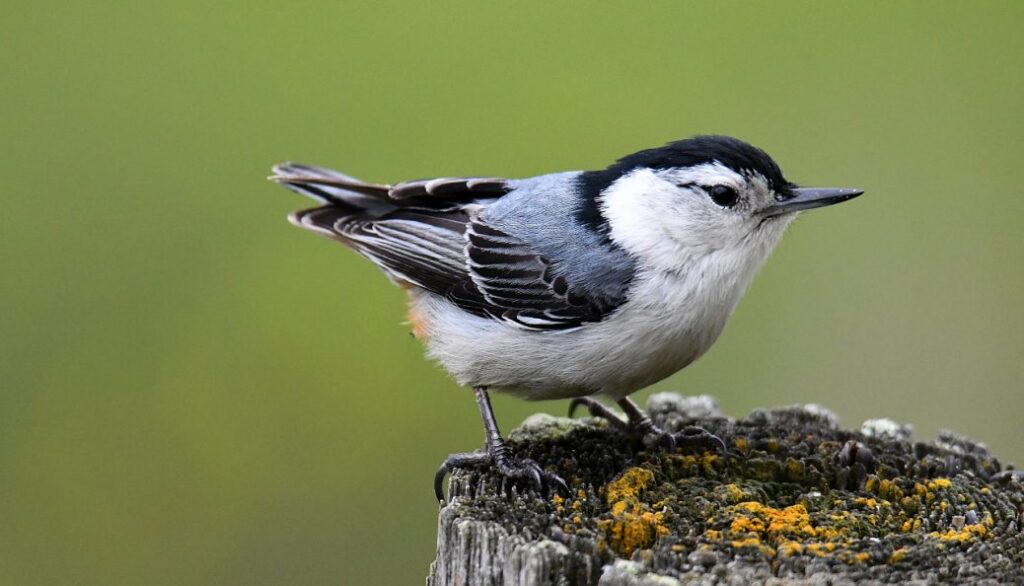
With pale blue-gray upperparts, the White‑breasted Nuthatch is another bark‑lover that brightens woodlands and feeders.
- Scientific Name: Sitta carolinensis
- Wingspan: 21–25 cm (8.3–9.8 in)
- Length: 14–16 cm (5.5–6.3 in)
- Weight: 18–30 g (0.6–1.1 oz)
You’ll hear their nasal “yank-yank” calls as they scoot head‑first down tree trunks. Mix sunflower seeds and peanuts in your feeders to lure them—they’ll extract bits skillfully with their slender bills.
Great Blue Heron
The Great Blue Heron is impossible to miss—tall, graceful, slate-blue, and often standing serenely along Illinois’ lakes and marshes.
- Scientific Name: Ardea herodias
- Wingspan: 167–201 cm (65.8–79.1 in)
- Length: 97–137 cm (38–54 in)
- Weight: 1.5–2.5 kg (3.3–5.5 lb)
These fishing masters can stand still for long periods, waiting to spear fish or frogs. Watch them unfold their enormous wings—or take off in slow, deliberate wingbeats—along river edges and wetlands.
Northern Parula
This petite warbler pops with blue-gray back and vibrant yellow‑green throat—often splashed with a chest band.
- Scientific Name: Setophaga americana
- Wingspan: 18–20 cm (7.1–7.9 in)
- Length: 11–13 cm (4.3–5.1 in)
- Weight: 7–11 g (0.25–0.39 oz)
Look for them flitting through treetops in moist woods, weighing less than a baseball. Listen for their quick, high‑pitched song: “zee‑zee‑zee‑zee‑zee‑chirp.” Migrants pass through Illinois in spring/fall.
Common Grackle
Though mostly black, the iridescent sheen of purple‑blue heads reveals them as blue-toned beauties when light hits just right.
- Scientific Name: Quiscalus quiscula
- Wingspan: 33–38 cm (13–15 in)
- Length: 28–34 cm (11–13 in)
- Weight: 90–142 g (3.2–5.0 oz)
Often seen in large flocks near fields, roadsides, or big trees. Their loud calls and noisy presence are eye-catching, and their head sheen glints in sunshine—especially early morning or late afternoon.
Little Blue Heron
Smaller than its Great Blue cousin, the Little Blue Heron is a sleek, dark slate‑blue delight frequenting marshes and wetlands.
- Scientific Name: Egretta caerulea
- Wingspan: 88–106 cm (35–42 in)
- Length: 56–66 cm (22–26 in)
- Weight: 378–748 g (0.83–1.65 lb)
You’ll catch them stalking shyly in shallow water, fishing with quick stabs. Their slender neck and elegant posture often make for great photo subjects on mid‑summer mornings.
Common Starling
“Blue” might stretch here, but those iridescent feathers flash purples and greens in the sun—making the European Starling a colorful part of Illinois birdlife.
- Scientific Name: Sturnus vulgaris
- Wingspan: 31–44 cm (12–17 in)
- Length: 19–23 cm (7.5–9.1 in)
- Weight: 58–101 g (2.0–3.6 oz)
These gregarious birds gather in giant roosts and swooping murmurations in fall. Their ability to mimic nearly any sound adds to their fascination—even though they’re non-native, their spectacle is still wildly entertaining.
Cliff Swallow
Boasting blue-gray upperparts and a cinnamon crown, Cliff Swallows nest in colonies under bridges and cliffs.
- Scientific Name: Petrochelidon pyrrhonota
- Wingspan: 28–32 cm (11–12.6 in)
- Length: 13–15 cm (5.1–5.9 in)
- Weight: 19–31 g (0.7–1.1 oz)
In summer, watch dozens of square‑nest mud pods under structures. Their chattering flocks swirl at dusk, producing constant melodic calls as they hunt insects overhead.
Snowy Egret
White, but with bright blue‑gray legs and yellow lores, the Snowy Egret adds a hint of blue to shorelines and marshes.
- Scientific Name: Egretta thula
- Wingspan: 95–105 cm (37–41 in)
- Length: 55–65 cm (22–26 in)
- Weight: 400–550 g (0.88–1.21 lb)
These elegant waders wave their golden feet underwater to draw fish closer. Spot them in summer wetlands or streams—often right next to Great Blues, but far more petite and delicate.
Red-winged Blackbird (Bonus Blue‑Hue Insight)
Males are mainly black, but mature plumage often shows blue‑black tones when they stretch or flex wings.
- Scientific Name: Agelaius phoeniceus
- Wingspan: 31–40 cm (12–16 in)
- Length: 19–24 cm (7.5–9.5 in)
- Weight: 46–68 g (1.6–2.4 oz)
Dominating in marshes and fields, their red epaulets flash during territorial displays above reed beds. Their harsh calls and early spring arrival make them seasonal alarm clocks.
FAQs
1. What’s the best time to spot these blue birds in Illinois?
Spring and early summer are prime—birds are breeding, singing, and visible. Migration in fall offers glimpses too, but plumage may be duller.
2. How can I attract Eastern Bluebirds and Tree Swallows?
Install nest boxes: open areas for bluebirds, near water/mixed habitats for swallows. Maintain predator guards and fresh clean water sources.
3. Can I tell Indigo Bunting apart from Blue Grosbeak?
Yes! Indigo Bunting is smaller and deeper “true blue,” while Blue Grosbeak is larger, chunkier, and has distinctive chestnut wing bars.
4. Why is the Blue Jay so noisy compared to other songbirds?
They’re smart and social – using loud calls for communication, territory defense, and mimicry. They’re also natural alarm-systems.
5. Are any of these species endangered or threatened?
Yes—Cerulean Warbler is near-threatened. Habitat conservation matters. You can help by planting native trees and preserving old-growth woodlands.
Conclusion
In Illinois, you’re lucky to experience incredible feathered diversity—especially among blue-toned birds. From bright-blue hatchlings at nest boxes to graceful herons along serene wetlands, these species enrich your daily moments with color, song, and charismatic quirks. You’ve now got the knowledge to identify them, understand their habits, and even invite a few into your own space.
Your engagement—whether through bird-friendly plantings, feeders, or simply quiet observation—plays a role in supporting their survival and enhancing natural beauty. Keep your eyes open this spring and summer and notice how your environment changes when a male Indigo Bunting warbles in the morning or a Great Blue Heron streaks across a pond at sunset. These birds aren’t just wildlife; they become part of your life’s natural rhythm. So grab your binoculars, maintain a respectful distance, and let Illinois’s blue birds show you the countryside in vivid hues.
